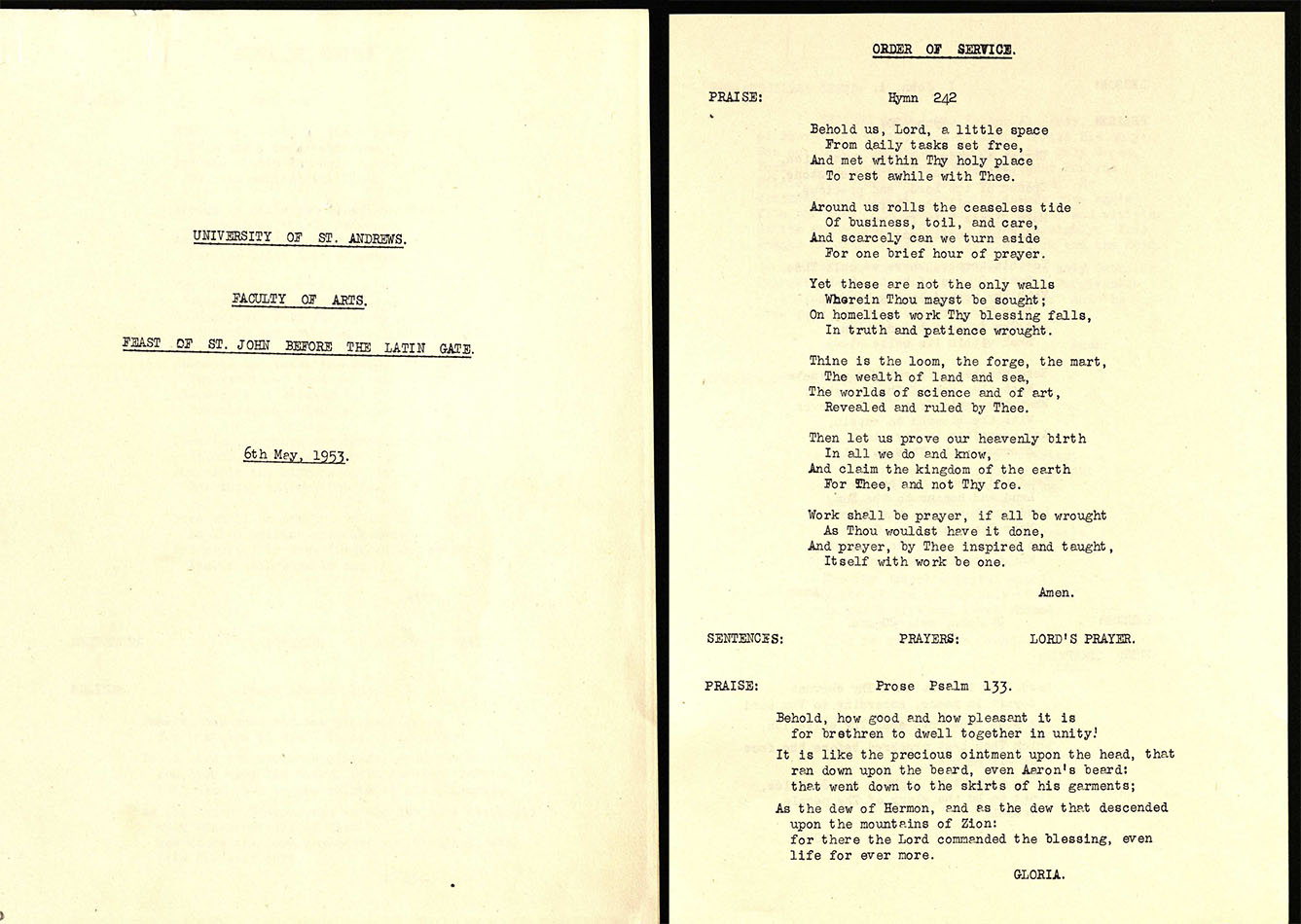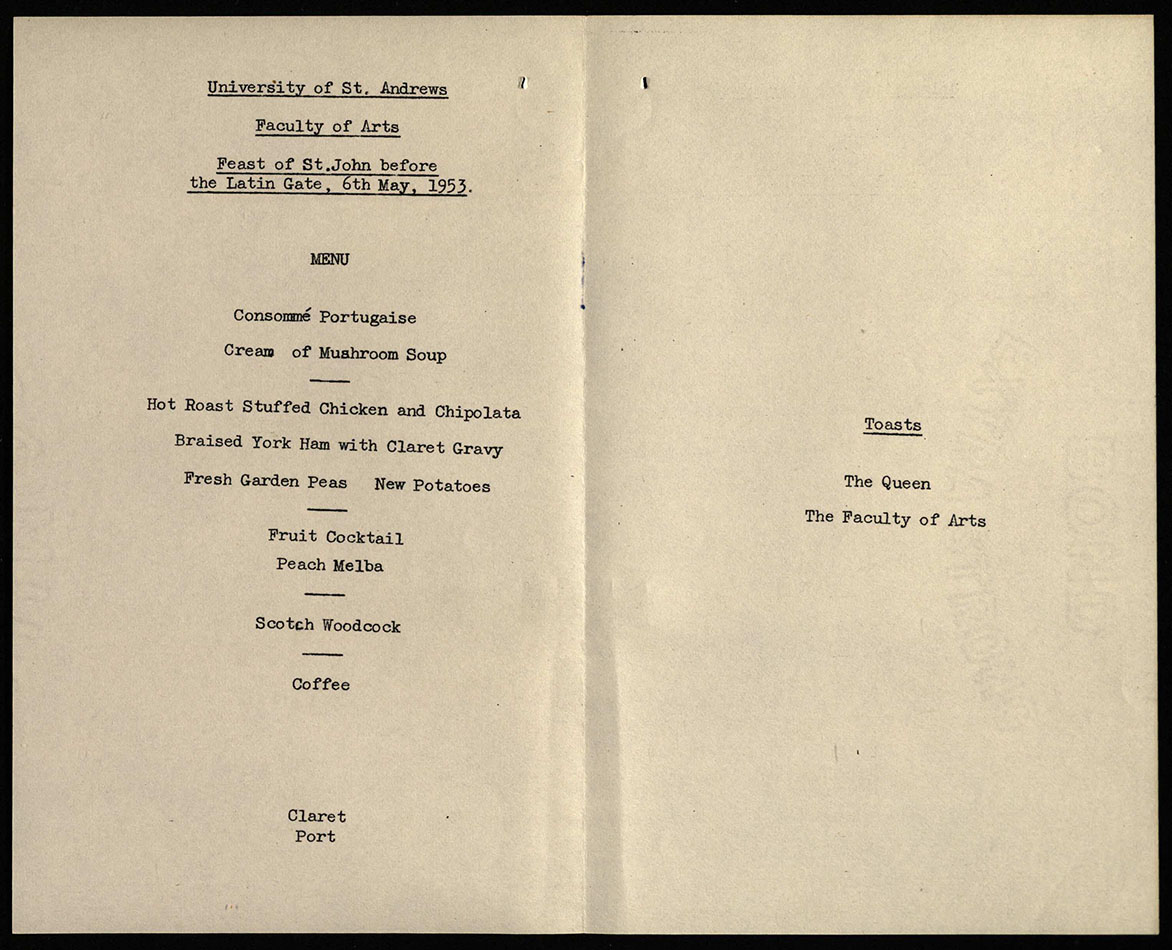The Faculty of Arts Feast, 6th May
In the liturgical calendar, the 6th of May is the Feast of St John the Evangelist before the Latin Gate. This feast commemorated the tradition that the Apostle John was ordered into a cauldron of boiling water/oil by the Emperor Domitian (81-96 CE) before the Latin Gate in Rome (where the road to Latium left Rome) and emerged unscathed.

In 1419 the University acquired its first building, on South Street, establishing a college and chapel dedicated to St John the Evangelist for the use of the Faculties of Theology and Arts. Bishop Wardlaw in 1430 founded a pedagogy for the Faculty of Arts on an adjoining site, intending to bring harmony and one day, a single pedagogy within the College of St John. The Faculty of Arts minutes from around this time (UYUY411) record that the celebration of the Feast of St John the Evangelist was first introduced in 1432 as an annual Faculty of Arts Feast of goodwill to be celebrated by all masters, both regent and non-regent. The celebration would have included a religious service in the Chapel of St John (the ruins of which form part of the foundations of Parliament Hall), a procession and a dinner, for which the masters were taxed. The Festival was celebrated until 1534.
Religious Feast days in the medieval period played an important role in fostering unity within the Faculty and colleges. The College of St Salvator celebrated the Feast of the Epiphany and while not much is known about the College of St Leonard’s, it is documented (3 November 1515) that St Leonard’s Day was a ‘Feast of the University’(1). St Leonard’s Day is commemorated today with a special service in St Leonard’s Chapel and meal in November.

Within the Muniment Collection there is a file of papers relating to the reviving of the celebration of this Feast by the Faculty of Arts in the 1950s (UYUY199). Correspondence between the Dean of Arts Professor C T Carr, Principal T Malcolm Knox and Keeper of Muniments and Reader in Scottish History Dr R G Cant, reveals that the celebration was revived in 1953 after a 400 year lapse. The procession was even featured in The Scotsman newspaper.

In 1952, Dr Cant advised the Dean of Arts on the form the revived celebration should take to ensure that it would mirror the medieval festival. Thus it would include a procession from Parliament Hall headed by the bedellus with a mace, a service at St Leonard’s Chapel and a dinner in the evening. This file also includes the Order of Service and Dinner menu for the celebration in 1953.



While we do not know when this celebration fell out of practice for the second time, we do know it was celebrated until at least 1961.
Sarah Rodriguez
Reading Room Administrator
(1) A Dunlop, Acta Facultatis Artium Universitatis Sanctiandree, 1413-1588 (St Andrews University Publications no. LVI. 1964).